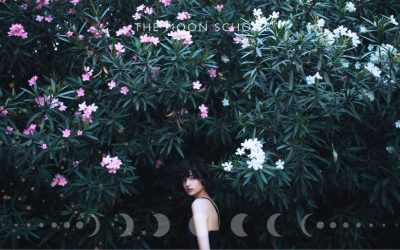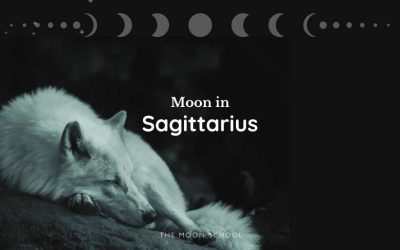The innocent archetype is characterized by optimism, purity, and goodness. Despite often being overlooked for its simplicity, the innocent is one of the most important archetypes to understand, because it represents such a fundamental aspect of human nature.
People who embody this archetype are often perceived as naive, childlike, or even foolish folks. But they also tend to be huge-hearted and well-intentioned. They often embody a real sense of wonder and awe at the world around them. They’re fascinated by the beauty and complexity of life, yet the simplest pleasures seem to inspire as much joy.
Understanding the innocent archetype can help us to better understand ourselves and others. It’s a way to more deeply appreciate the beauty and complexity of human nature.
Defining the innocent archetype
To understand the innocent archetype, you first need clarity around the concept of archetypes. So if this is new to you, here’s a quick explanation…
What is an Archetype?
An archetype is a universal symbol or energy pattern.
It’s a bit like a blueprint, a model or essential form that crosses space and time, existing in the collective unconscious.
Archetypes are a part of our psyche and are universally recognizable. They are recurring motifs that can be found in characters in mythology, literature, and art, across almost all cultures and time periods.
Carl Jung, the Swiss psychiatrist first, introduced the concept of archetypes, though in truth they are much older.
As individuals, we tend to inherit archetypal energies from our ancestors, though you can also have certain archetypal patterns or behaviors that don’t seem to bear any connection to the rest of your family! Humans are programmed to recognize and respond to archetypes – this isn’t something we can switch off, and it often happens on a subconscious level. Ultimately, they represent fundamental human experiences and desires that are shared by all people.
YOU MAY BE INTERESTED IN: 7 Feminine Archetypes and How to Embody their Power
What is the innocent archetype?
Encompassing a very particular flavor of life force energy, the innocent has a gentle, happy-go-lucky spirit and a childlike nature, that’s totally unique.
Traits, qualities, and characteristics of the innocent archetype
Innocents seem to have an inherent trust in the world and a belief in the goodness of people. Their cheerful outlook can be contagious, as is their sense of wonder and joy.
Innocent archetypes also tend to have a strong moral code and are motivated by a desire to do what is right. With a deep sense of empathy, they’re often able to connect with others on a profound level, as the ego rarely features. Their sincerity and honesty mean they connect to other people from the heart, rather than from the ego.
They’re also more likely creative and imaginative, unaffected by the cynicism that most adults tend to pick up – to some degree – as we explore the world around us.
The innocent is connected to the Maiden archetype – read about this HERE
Here are some of the key positive characteristics, qualities, and traits of the innocent archetype:
- Pure-hearted and sincere
- Gentle
- Kind
- Optimistic outlook
- Hopeful
- Trusting
- Faithful and loyal
- Childlike and playful
- Curious
- Open-minded
- Honest
- Non-judgmental
- Humble
- Unassuming
- Forgiving
- Idealistic and visionary
- Empathetic
- Selfless
- Generous
- Joyful
- Happy-go-lucky
Weaknesses and shadow side of the innocent archetype
While those with dominant innocent energy are generally seen as bright, positive lights in the world, they DO have some negative characteristics, or shadows. The shadow contains personality traits that we’re unaware we have, as these exist in the unconscious.
WANT TO LEARN MORE? ACCESS the entire library of articles on the shadow HERE
Their naivety makes them gullible, and easily taken advantage of by others. They often believe everyone has only good intentions. But because of this (albeit very lovely) blinkered view of the world, they can’t always see the “darker side” of humanity. Sadly, this can lead to betrayal or disappointment.
Another potential shadow side of the innocent Archetype is a lack of responsibility. Because innocents tend to believe they’re always doing the right thing, they can avoid taking responsibility for their actions, especially when things don’t turn out right. But without accountability for their mistakes, personal growth and development is much harder to come by.
Innocents may also have a tendency to avoid conflict. When solely focused on ‘keeping the peace’ this can lead to them being manipulated and/ or taken advantage.
And while their childlike nature is seen as endearing to most, others people may perceive them as weak or immature. This may result in them missing out on opportunities, relationships and life experiences that most folks have access to.
Here are some of the key negative characteristics, qualities, and traits of the innocent archetype:
- Naive
- Immature
- Irresponsible
- Passive
- Indecisive
- Inflexible and resistant to change
- Avoids responsibility and accountability
- Powerless (or doesn’t believe in, or claim their power)
- Overly dependent
- Needy
- Overly trusting
- Gullible and easily deceived
- Easily manipulated
- Overly optimistic and unrealistic
- Overly emotional
- Overly sensitive and easily hurt
- Reactive
- Can be perceived as weak
- Easily disillusioned
- Easily disappointed
- Lacking in resilience
Examples of the innocent archetype in literature, film, TV and popular culture
The Innocent or “innocence archetype” is a really common character type showing up in film, literature, and TV.
These characters are often portrayed as pure, naive, and optimistic, believing in the good of everyone and everything, even in the face of adversity. Interestingly, it’s the faith, sincerity, and inability to stray from the path of goodness, that means these characters find their happy endings.
Here are a few innocent archetype examples that you may have come across –
Forrest Gump: Forrest Gump, played by Tom Hanks is the quintessential Innocent archetype. Portrayed as a super simple-minded man, he has a heart of gold. And despite his low IQ, Forrest manages to accomplish great things in his life.
Harry Potter: Harry Potter is another perfect example, as he’s a young boy who is thrust into a magical world that he knows nothing about. Despite the dangers and challenges he faces, Harry remains pure of heart and always tries to do the right thing.
Dorothy Gale from The Wizard of Oz: Dorothy is a classic innocent character. She’s a young girl from Kansas who gets swept away to a magical land. Yet despite her trials, she remains pure of heart and it’s her innocence that ultimately helps her to defeat the Wicked Witch of the West.
Cinderella: As the central character from the timeless fairy tale, Cinderella is a girl who’s downtrodden by her wicked relatives. Yet her natural beauty and unassuming nature win the heart of her prince – the mythological hero – and leads to her escape.
Mowgli from The Jungle Book: The boy who grew up in the jungle, Mowgli is another child archetype defined by his trusting nature.
Mickey Mouse: Virtually the innocent archetype definition, Mickey Mouse is a kind, optimistic, and playful character, who embodies happiness, and the sense of wonder and curiosity we all wish we still had! All across the globe, he’s one of the most innocent archetypes of all time making him a beloved and enduring character for people of all ages.
The innocent archetype in marketing and advertising
We can’t talk about the innocent, without touching on the innocent brand archetype.
It’s a simple symbol. But that’s what makes it so powerful to many brands, organizations and marketing campaigns.
Why is the innocent archetype so effective?
The Innocent Archetype is so radically effective in marketing and advertising because it taps into humanity’s core desire to seek happiness. The innocent embodies the idea of being untouched by the negative aspects of the world.
These are powerful concepts.
They can be used effectively – and pretty easily – to evoke positive emotions in consumers. Remember how I mentioned that humans are programmed to recognize and respond to archetypes? And that this isn’t something we can switch off because it happens on a subconscious level.
So brand archetypes are connecting straight to your unconscious mind! And this bypasses and sense of logic or rationale.
The Innocent brand archetype can easily create a sense of nostalgia, optimism, and/ or hopefulness that deeply resonates with their target audience.
A few examples of the innocent archetype in advertising
Coca-Cola’s “Holidays are Coming” campaign: The well-known ad features a convoy of illuminated Coca-Cola trucks making their way through a snowy landscape, spreading joy and happiness to everyone they encounter. It’s designed to evoke feelings of warmth, togetherness, and nostalgia whenever coca cola is mentioned, all qualities associated with the Innocent Archetype.
McDonald’s: Another of the main ‘innocent brands’ McDonald’s has used this archetype in their ad campaigns for many years. They often feature happy, carefree children enjoying their meals, helping them to position themselves as a fun, family-friendly destination.
Disney: An absolute master at harnessing the innocent brand! Disney often portrays their characters as kind, optimistic, and playful, helping them to promote sentiments of joy and wonder for people of all ages. The nostalgia this brand naturally invokes in many people also adds to this.
Dove’s “Dove real beauty sketches”: One of the best recent brand examples using soft imagery of “real beauty”. By portraying genuine people in a vulnerable state – ie half naked! – Dove has captured the simplicity that the innocent embodies. (This also alludes to the natural ingredients in their products)
Embodying the innocent archetype
Do you want to embody more of the innocent?
Well, if you feel like you’re lacking in any of the positive qualities listed above, then it may be worth exploring this symbol and inviting a little more of its energy into your life.
Spending time cultivating a sense of innocence and awe in life, and enjoying the simple things can help you to find happiness and harmony, when it feels like the world contains very little!











